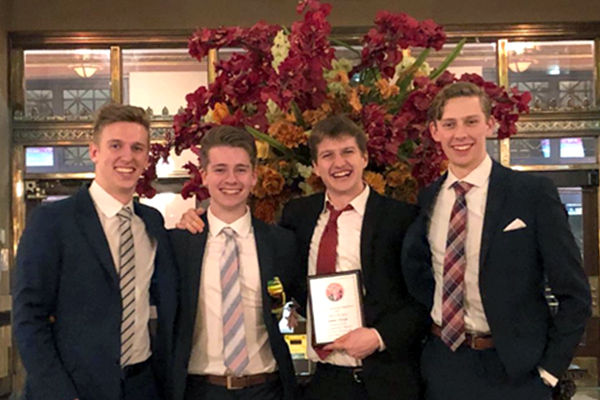
Congratulations to Justin Bonal (Engineering Physics) and his team for winning top prize for Junior Design category at 2019 Ontario Engineering Competition (OEC) held at McMaster University from January 18th to 20th. They will compete in the nationals at University of Waterloo in March. Good luck gentlemen! His team mates are:
- Chas Meadows (Mining engineering)
- Connor Chappell (Computer engineering)
- Matthew Julseth (Civil engineering)
About the Design and Process
Our team was commissioned to create a device to effectively remove pollutants from the bottom of the Hamilton Harbor, built up due to the steel plants in close proximity. Our design, the hammertown H.A.M. (Hydraulic Arm Mechanism), consisted of two syringes connected by a plastic tube. The device was supported with the use of tricolor popsicle sticks, and had plastic solo cup shot glass with holes in it glued to the bottom to act as the filtration mechanism. The prototype had to remove 5 pebbles from the bottom of a water basin in less than a minute and forty five seconds, while taking up as little “pier” space as possible.
Even though we made the prototype, for our presentation we really pushed the fact that we wanted our design to be able to scale up to a real device that could be used. So, we designed it to be attached to a back of a boat. This is what allowed us to win the competition in the end, as our presentation really exemplified our design process, as well as the short comings of the design and what next steps should be taken in order to make this a feasible project. Even though the APSC 100 and 200 courses we take as engineering students at Queen’s are extremely rigorous, they are fully the reason why we won this competition. They really drilled the design process into our heads so when the competition came around, the process was natural to us. We managed to get a 100% scale across the board, being graded on the performance of the prototype, our team working abilities, our presentation, and the originality of the design.
 Queen's 2015 Nobel Prize in Physics
Queen's 2015 Nobel Prize in Physics